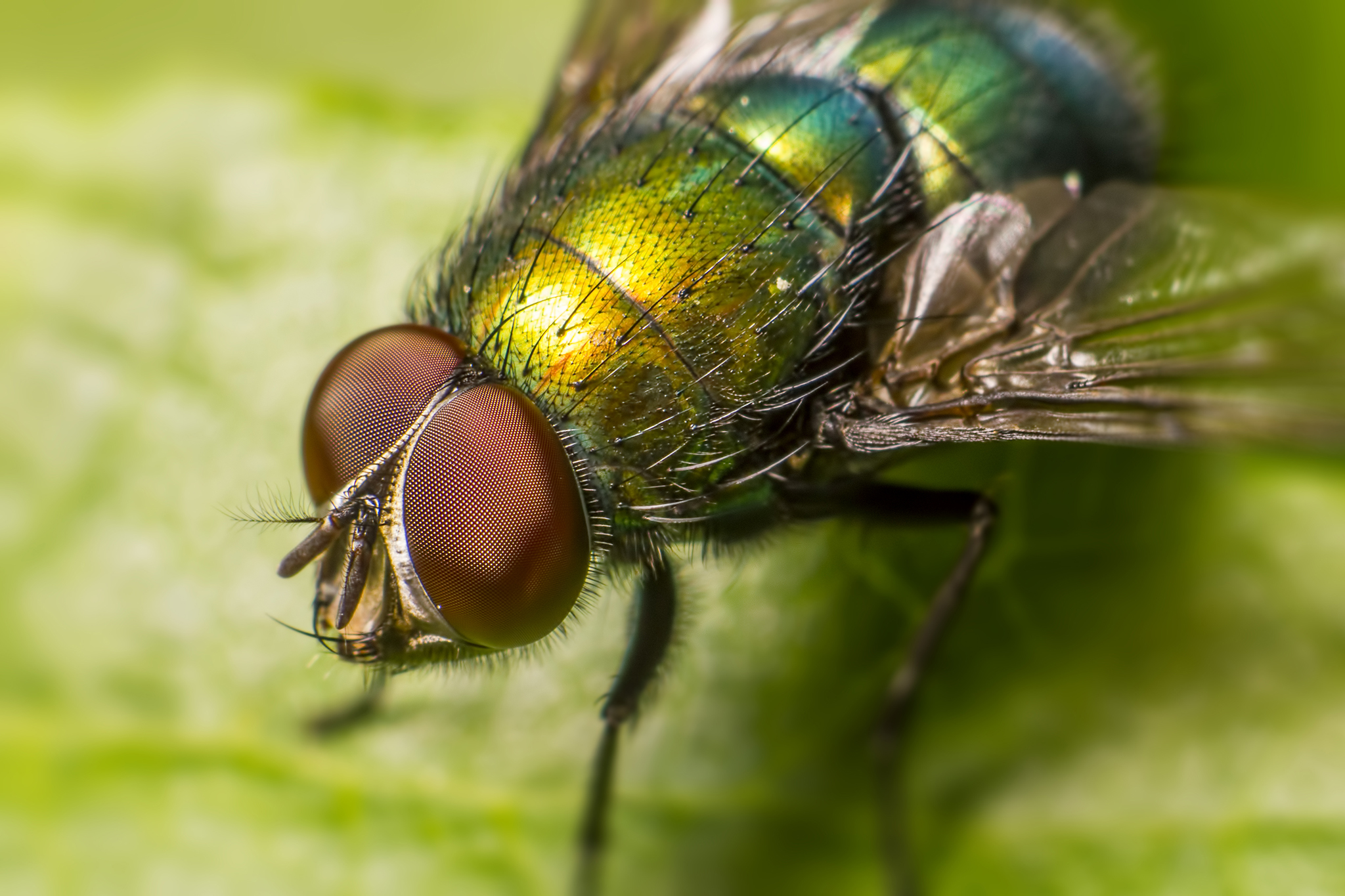Here’s a detailed overview of the Common Green Bottle Fly (Lucilia sericata), a widespread fly well-known in both medical and ecological contexts:
Common Green Bottle Fly (Lucilia sericata)
Taxonomy & Classification
- Kingdom: Animalia
- Phylum: Arthropoda
- Class: Insecta
- Order: Diptera
- Family: Calliphoridae (blowflies)
- Genus: Lucilia
- Species: L. sericata
General Description
A medium-sized, metallic-green fly, easily recognized by its shimmering body and role in decomposition.
- Size: 10–14 mm in length.
- Coloration:
- Metallic green body, sometimes with bronze or copper reflections.
- Reddish compound eyes.
- Transparent wings, held roof-like over the body at rest.
- Antennae: Short, three-segmented with an arista (hair-like structure).
- Sexual Dimorphism: Males have eyes closer together than females.
- Lifespan: Adults typically live 2–4 weeks.
Behavior & Lifestyle
- Activity: Diurnal, most active in warm, sunny weather.
- Flight: Strong fliers; capable of rapid dispersal in search of food or carrion.
- Feeding:
- Adults feed on nectar, honeydew, carrion fluids, and waste.
- Larvae are saprophagous (feeding on decaying animal tissue) but may also infest living tissue (facultative myiasis).
- Reproduction:
- Females lay eggs in wounds, carrion, dung, or decaying matter.
- Eggs hatch within 8–12 hours.
- Larvae (maggots) feed for ~3–7 days before pupating in soil.
- Complete life cycle: 2–3 weeks under warm conditions.
Habitat
- Strongly associated with human-influenced habitats.
- Found in:
- Urban areas (garbage, markets)
- Rural pastures
- Forest edges and meadows
- Prefers warm, temperate to subtropical regions.
Geographic Range
- Cosmopolitan distribution.
- Found across Europe, Asia, Africa, North America, South America, and Australasia.
- One of the most abundant blowflies in the Northern Hemisphere.
Ecological & Human Importance
- Decomposer: Plays a vital role in breaking down carrion and recycling nutrients.
- Forensic Entomology: Used in estimating post-mortem intervals (time since death) based on maggot development stages.
- Medical Relevance:
- Myiasis: Larvae can infest wounds or necrotic tissue in animals and occasionally humans.
- Maggot Therapy: Sterile larvae are deliberately used in medicine to clean chronic wounds and ulcers by eating dead tissue but sparing live tissue.
- Agricultural Impact: Known pest of sheep, causing flystrike (cutaneous myiasis).
Special Adaptations
- Acute Olfaction: Adults can detect the smell of carrion or wounds from long distances.
- Rapid Development: Short life cycle allows populations to explode under favorable conditions.
- Larval Mouth Hooks: Adapted for scraping and tearing dead flesh.
Conservation Status
- IUCN Red List: Not evaluated (common and widespread).
- Not considered threatened; often abundant to the point of being a nuisance.
Interesting Facts
- Shimmering metallic colors are due to structural coloration, not pigments.
- One of the first insects to arrive at a corpse, making it crucial in forensic science.
- Used historically in folk medicine for wound cleaning, long before modern maggot therapy.
- In warm weather, L. sericata can complete its entire life cycle in just 14 days.
Visited 812 times, 1 visit(s) today
Views: 1377
Subscribe to the newsletter:
